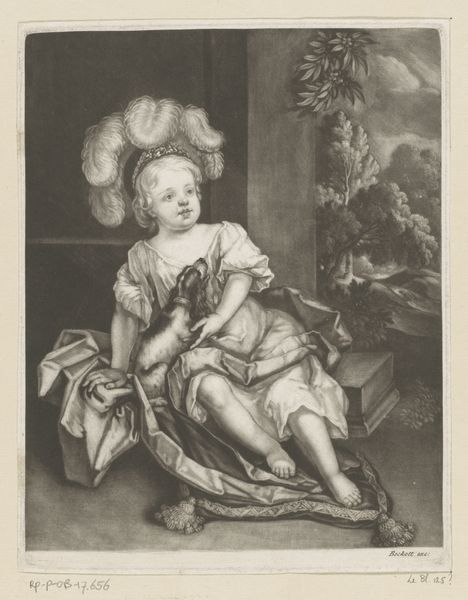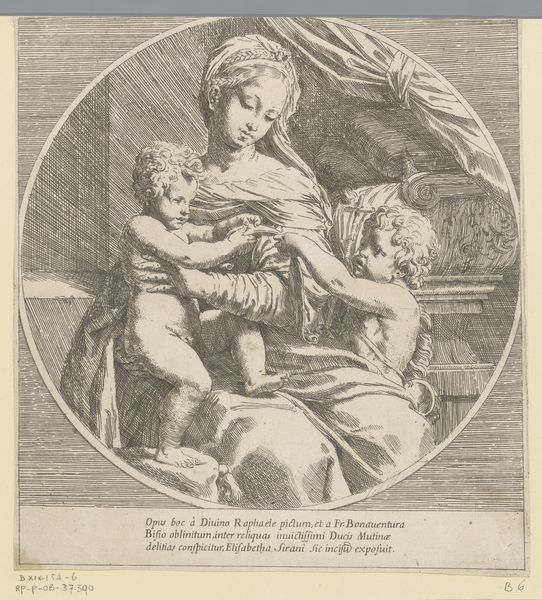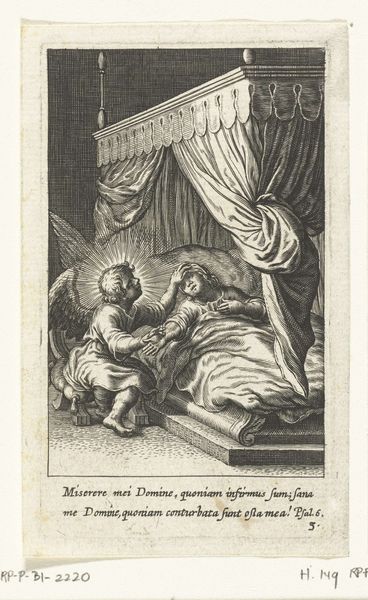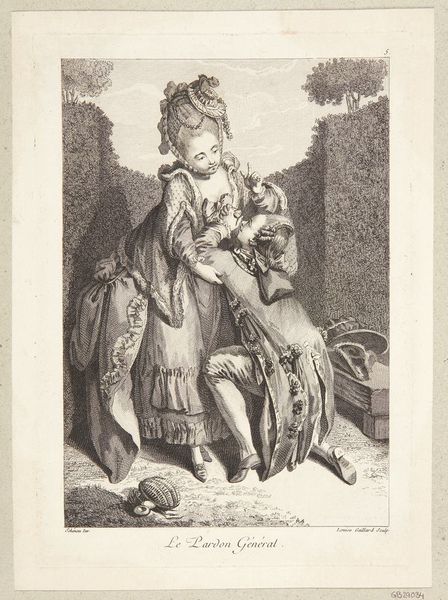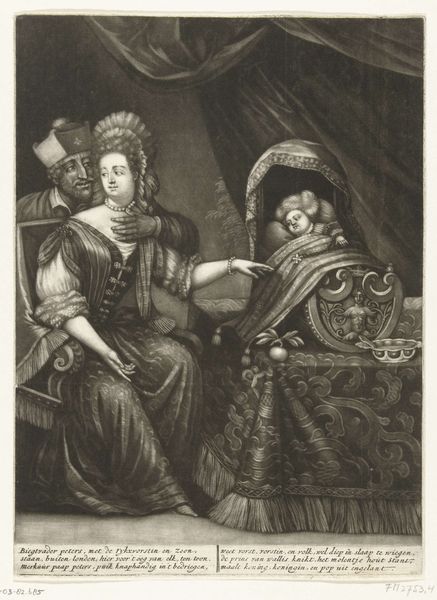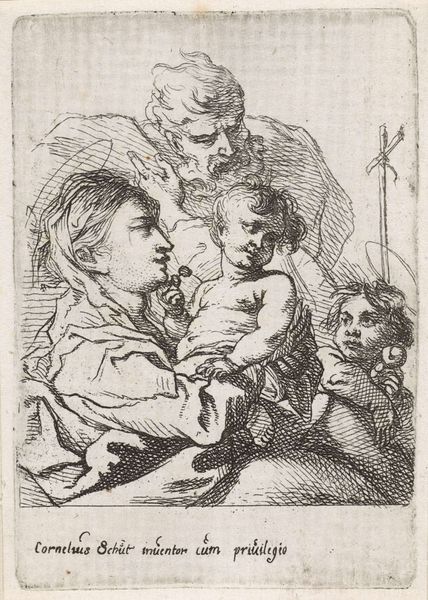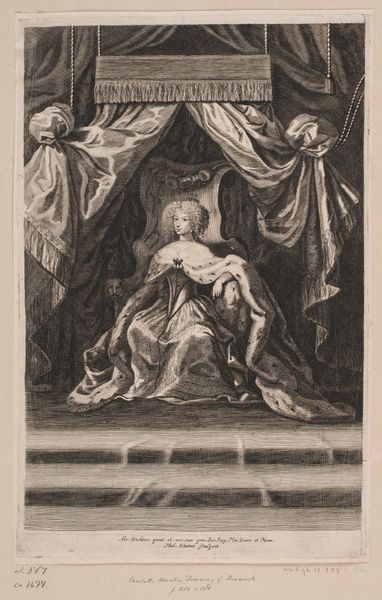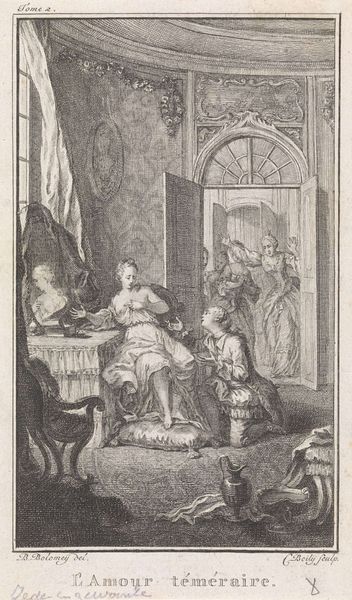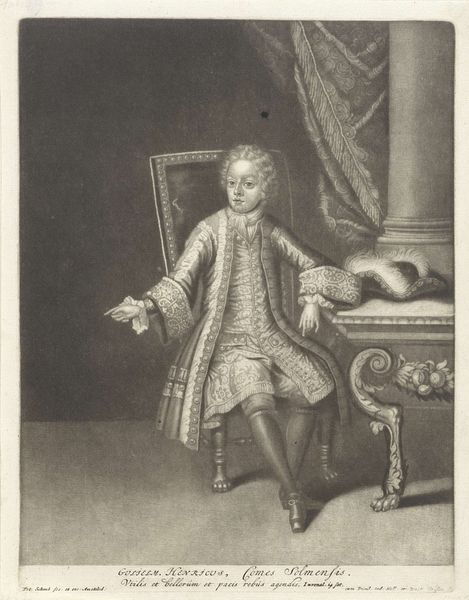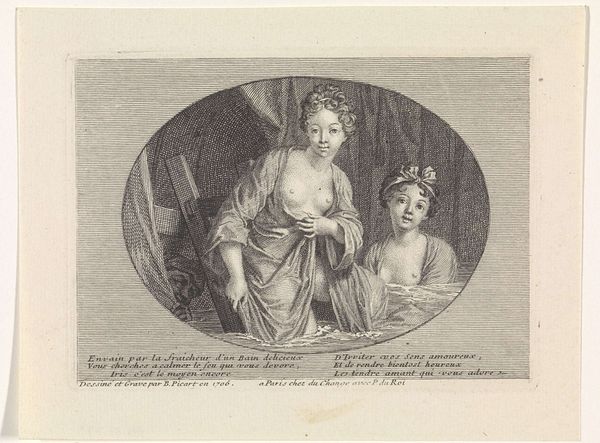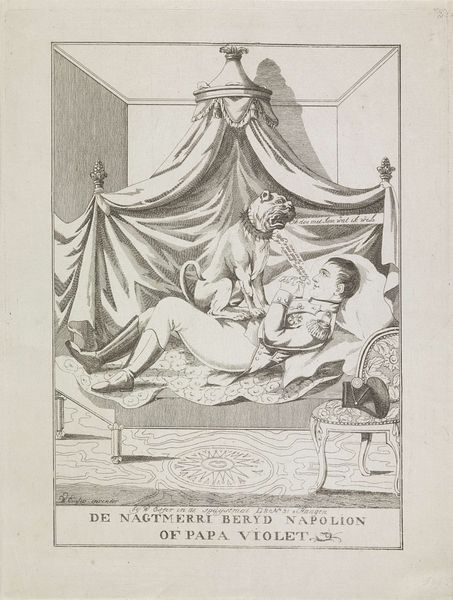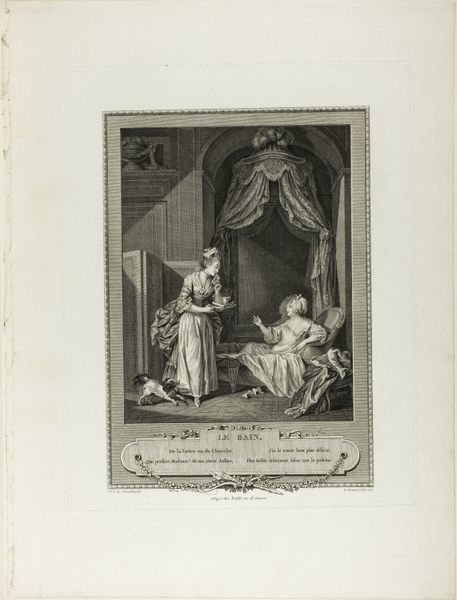
print, engraving
#
portrait
#
baroque
# print
#
old engraving style
#
figuration
#
history-painting
#
engraving
#
columned text
Dimensions: height 246 mm, width 185 mm, height 347 mm, width 213 mm
Copyright: Rijks Museum: Open Domain
Editor: This print, "Jacobus Frans Eduard, prins van Wales, 1688-1689," made between 1688 and 1713 by Pieter Schenk, features a small child nestled on some dark cushions, looking rather regal despite the somber mood the dark engraving evokes. A crown rests to their side. How would you interpret this piece, especially considering its historical context? Curator: This engraving offers a fascinating glimpse into the public role of imagery in shaping perceptions of power and succession during the Baroque period. We see the infant James Francis Edward Stuart, the "Old Pretender," presented almost as a martyr, given the title, the crown and accompanying verses following his death in infancy. Editor: A martyr? The title includes his death but the dates state he lived beyond infancy. What purpose would this depiction serve during that time? Curator: Indeed. His life was controversial due to the circumstances of his birth, shrouded in rumours. Consider how such an image, circulated widely as a print, might function to solidify support for the Stuart claim to the British throne in the face of increasing Whig power, years after the depicted event. The politics of imagery were crucial in constructing and maintaining legitimacy. It also emphasizes hereditary succession, a core tenet of monarchical power. Note the Baroque style of the engraving – the dramatic lighting, the opulent fabrics – all employed to amplify the sense of importance and tragedy. What does the verse underneath it tell us? Editor: The title itself translates to "On the Death of the Prince of Wales", followed by poetic verses. The text seems to highlight themes of loss, royalty, and divine will in Dutch. Knowing its intended audience and purpose does allow for a different viewing than first glance. Curator: Exactly. The print functions as a carefully constructed piece of political propaganda, speaking to anxieties around succession and aiming to garner sympathy for the Stuart cause. Editor: That is incredibly interesting. Now, having more knowledge of the socio-political elements during the Baroque period, it's now obvious that his role extends past just visual artistry. Curator: Precisely. Context unlocks deeper meanings and allows us to see how art actively participates in historical narratives.
Comments
No comments
Be the first to comment and join the conversation on the ultimate creative platform.
